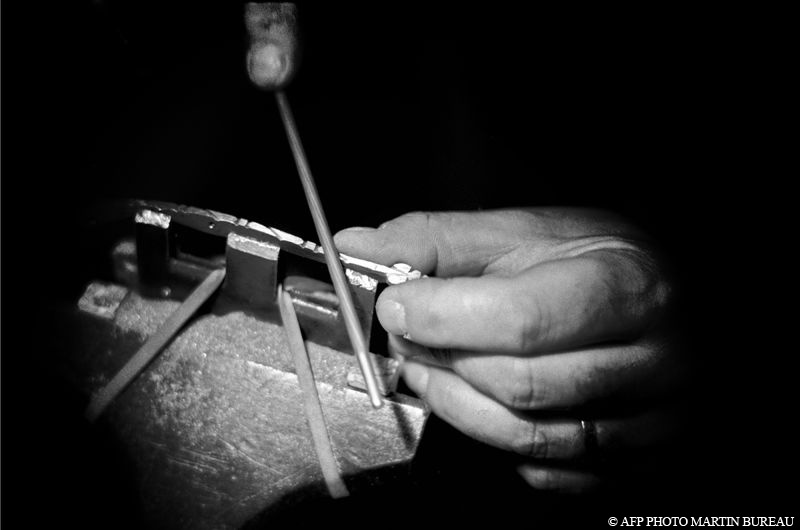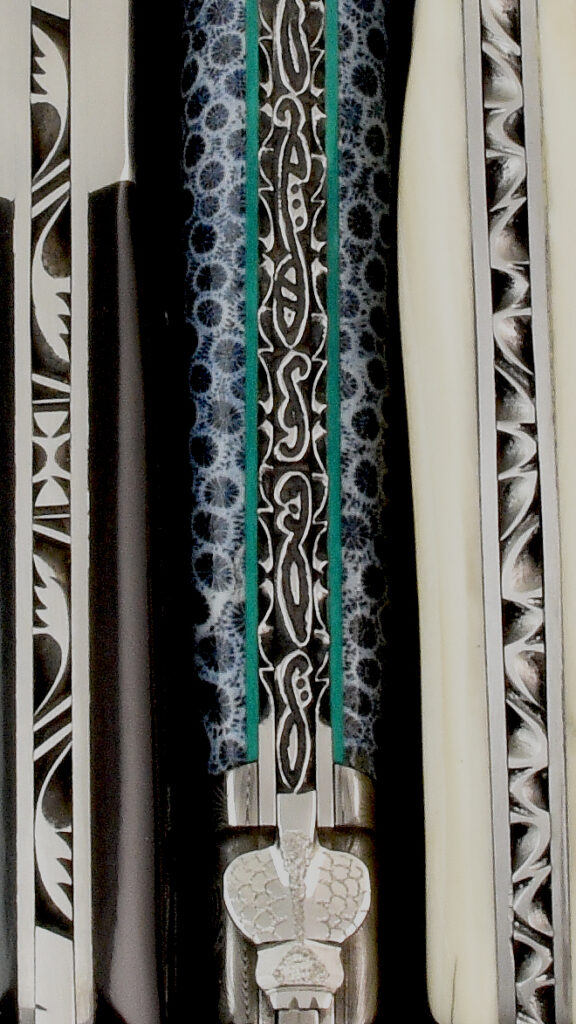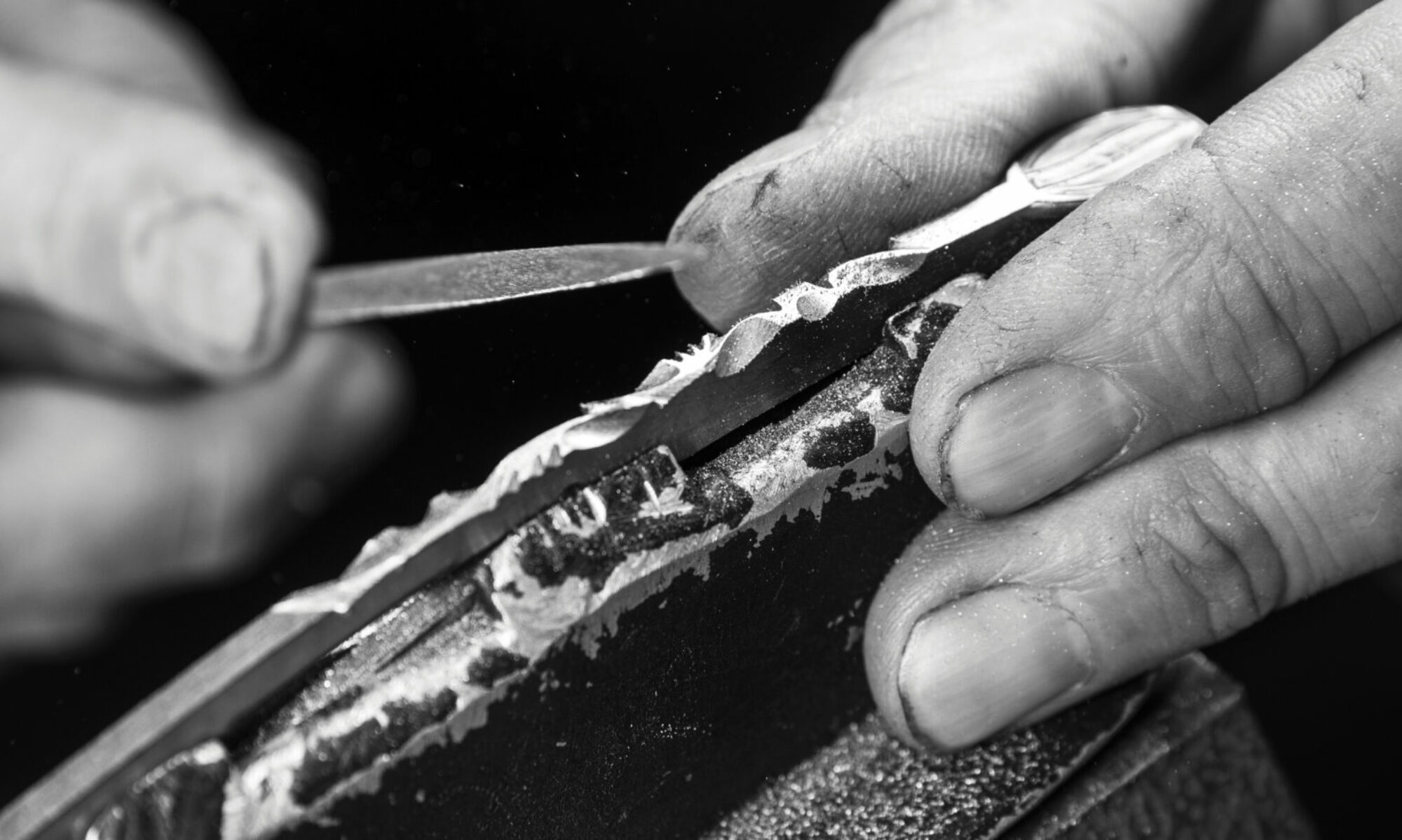A knife is above all a utilitarian object, which can even be qualified as a tool in its own right. It has been used for centuries, whatever its model, to assist farmers in their daily tasks. Very quickly, this initially rudimentary tool was adorned with more and more sumptuous decorations. If many knife lovers are familiar with Damascus blades and other handles made of rare and precious materials, the work known as “Guillochage” is often put aside.
Guillochage is a technique of engraving in hollow, which allows to decorate blades, springs and plates by removing material with a file or a chisel. Most often, the guilloche is done in a symmetrical way and consists of lines and curves intertwined. It is done with files and chisels of different sizes and shapes on steel for the springs, but it is a technique applicable to wood or ivory.
If guilloche is a classic work in cutlery, the term is also known in watchmaking. High-end watches often have a dial decorated with patterns composed of straight lines that play with reflections and light. Beyond the aesthetic aspect, the guilloche also gives the dial a better readability. As in cutlery, the guillochage of watches was initially done manually, but the invention of specialized machines (the guilloche lathe) was to revolutionize this industry. A great name in jewelry, Pierre-Karl Fabergé, popularized the technique with his eggs decorated with enamelled guilloche.
But whether in watchmaking or cutlery, the difficulty for the craftsman is to maintain symmetrical and regular patterns!

In traditional cutlery workshops like ours, this work is done by hand. The guilloche work does not concern only one part of the knife, the plates, the back of the blade and the inside of the spring can be chiseled, this range of knives is often superior in price range since the manual work is even more consequent. Quality guilloche work is done freehand to achieve a finely crafted decoration. It has the added advantage of being unique!
The work of guillochage can be more or less delicate, depending on the chosen motif or the size of the knife. A “fine” guilloche will be the most beautiful effect on a knife with exceptional materials such as a damascus steel blade and coral handle for example. It is then close to a jeweler’s work.

